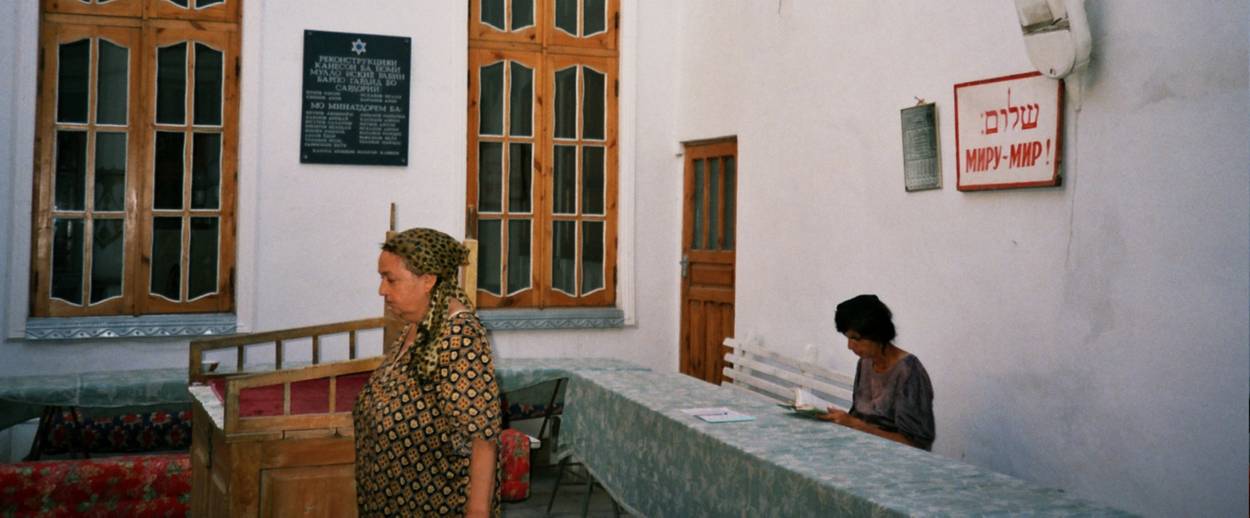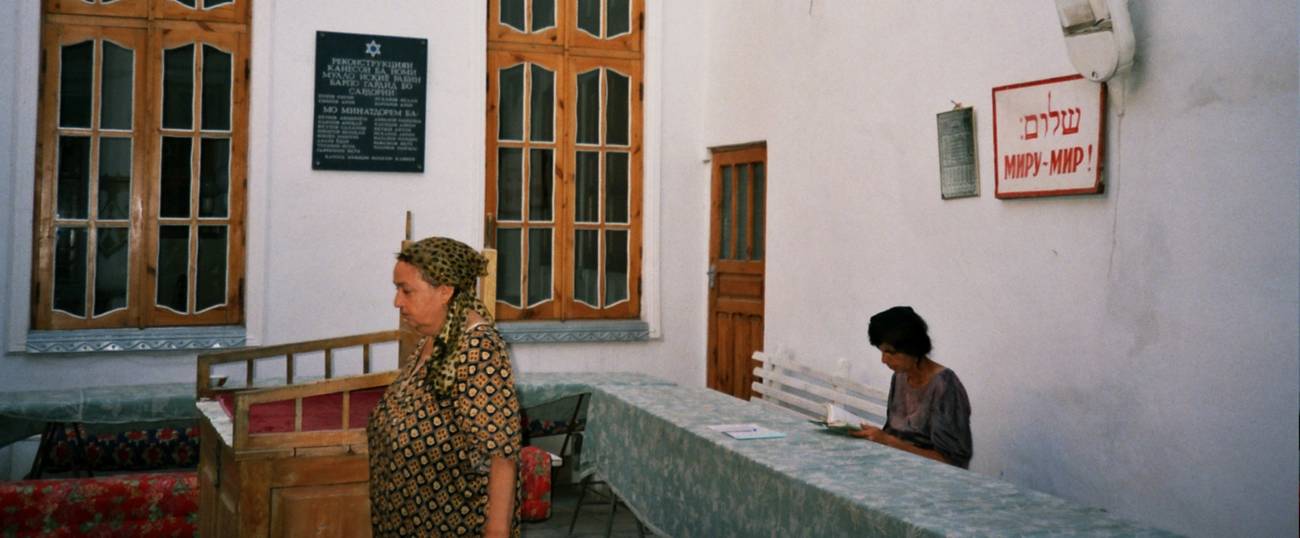Among the Last Jews of Bukhara
A cemetery is one of the livelier attractions in what remains of Bukhara’s Jewish community




Chances are that the great majority of Jews who will ever call Bukhara, Uzbekistan, home are dead. But in cemeteries in the Russian-speaking world, the residents feel less dead than they really are. The faces of the deceased are often etched onto their tombstones in detailed low relief, turning a graveyard into a portrait gallery, a pantheon of people who did nothing more or less heroic than live out their allotted time.
The lively graves at the Jewish cemetery in Bukhara, an ancient and shadeless expanse announced by its turquoise-domed gatehouse, offer a bit of consolation for having to visit dead Jews in the absence of live ones. There are men in embroidered Bukharan skullcaps, smiling women in bangles and beads, Red Army officers lavished in medals and bars. There are long-beards and no-beards; graves with menorahs and graves with sickles and hammers. Some graves have no Jewish content on them whatsoever; on some, the black portrait-stones stand perpendicular to a second marker whose text is rendered in Hebrew. By far the most poignant graves have double portraits on them—above, an elderly man or woman who died in the 80s or 90s; below, a young man in an almost blank army uniform, struck down sometime between 1939 and 1945, thousands of miles to the west. One face is frozen in tragically permanent youth; the other wears the full burden of those decades of absence.
The Bukharan Jewish cemetery tells the story of a community that weathered a tumultuous 20th century. At its start, Bukhara was an independent emirate that had shrewdly resisted Russian domination. By its end, the Soviet experiment had come and gone, and Uzbekistan—a word that would have been entirely unfamiliar to most of the people buried here—was under one of the most brutish and vacuous dictatorships of any post-Soviet state. The Jews of Bukhara were never violently liquidated, but they didn’t really have an easy run of things either.
Should one feel grateful that Bukhara’s Jews eventually had the freedom to leave for Israel or Queens? Should a visitor to the cemetery be happy that these people’s children made it to Jerusalem and Rego Park—or ponder over what’s lost when there are just a few hundred Bukharan Jews left in Bukhara itself?
Samarkand is four dusty and potholed hours down the road from Bukhara. There had been Jews there for centuries before local boy Tamerlane the Great rampaged through much of the known world, a fearsome accomplishment in the 14th century or any other era.
Only when standing between the three ecstatically tiled portals of the Registan complex, or meditating on the sublime proportions of the Bibi-Khanym Mosque is it possible to imagine Samarkand being the capital of an empire spanning from Kabul to the Bosphorus. The city has monuments of unearthly power stranded within a Soviet-era lattice of avenues and plazas. The incongruities of architecture and urban planning are part of what makes modern-day Samarkand unique. The city’s core, formed during the Timurid dynasty, is ringed with tsarist structures and the occasional Soviet monstrosity. All this within a city where much of the population speaks Persian.
A door in a metal gateway abutting the hideous modern plaza across from the Bibi-Khanym Mosque leads to a warren of zig-zagging residential streets and the remains of Samarkand’s old city. A passage little wider than an alleyway reveals the fat dome of the late 19th century Gumbaz Synagogue, its interior decorated in a dazzling blue floral pattern. Inside the sanctuary, it feels as if the dome encompasses the entirety of the room. The space is compact yet airy, a minor miracle of sacral architecture crammed into a tiny footprint.
On the early Friday evening that I visited, a wiry and nearly elderly fellow was praying in the courtyard just outside the shul’s doors. Chickens scurried around the opposite end of the compound. In halting Hebrew, I explained that I was visiting from New York and wanted to know if anyone else would be coming. In somewhat less halting Hebrew, he explained that he prayed at this synagogue three times a day, often alone. There was a functioning synagogue in the new city (a Chabad shul, it turned out), but he didn’t expect anyone else would be showing up tonight, or tomorrow morning. The synagogue operated when visiting groups of Jews arranged for it to be open, but it would not be holding services on Rosh Hashanah either.
An astounding diversity of people were deported to modern-day Uzbekistan in Soviet times. Tatars, Germans, Koreans, Poles, and various Russian-speaking internal enemies were shipped to the extreme southeast of the empire, a place where local enthusiasm for communism and oversight from Moscow were far weaker than in much of the rest of the Union. Many Russians came willingly as well, including significant numbers of Jews.
Since the early 1990s, many of Uzbekistan’s Russians have left, though they still account for just under 10 percent of the population. The Tashkent Ashkenazi synagogue, a discrete rectangular building that opened in the early 1970s, caters to the few Russian-speaking Jews who haven’t moved somewhere to the west yet. On erev Rosh Hashanah there were about 40 people on-hand, with the crowd somewhat younger than I had expected. The best of the English speakers looked like they couldn’t have been more than 18 years old. Their major complaints about life in Uzbekistan had to do with the slow internet speed—Uzbekistan gets its internet from Kazakhstan, which gets its internet from Russia. It’s not great a lot of the time in Brooklyn either, I assured them. After services, the entire community sat down to eat eggplant salad, herring, and peppers stuffed with minced fish. It was the sort of shul where people smoked immediately after High Holiday services but also kissed every mezuzah they walked past. Services would be at 10 a.m. the next morning.
Armin Rosen is a staff writer for Tablet Magazine.